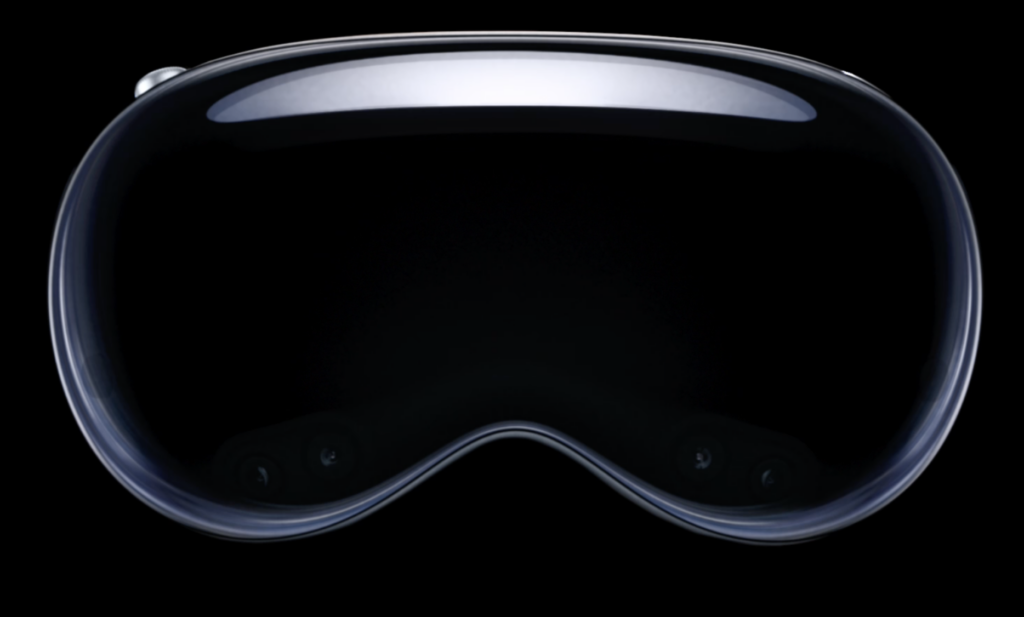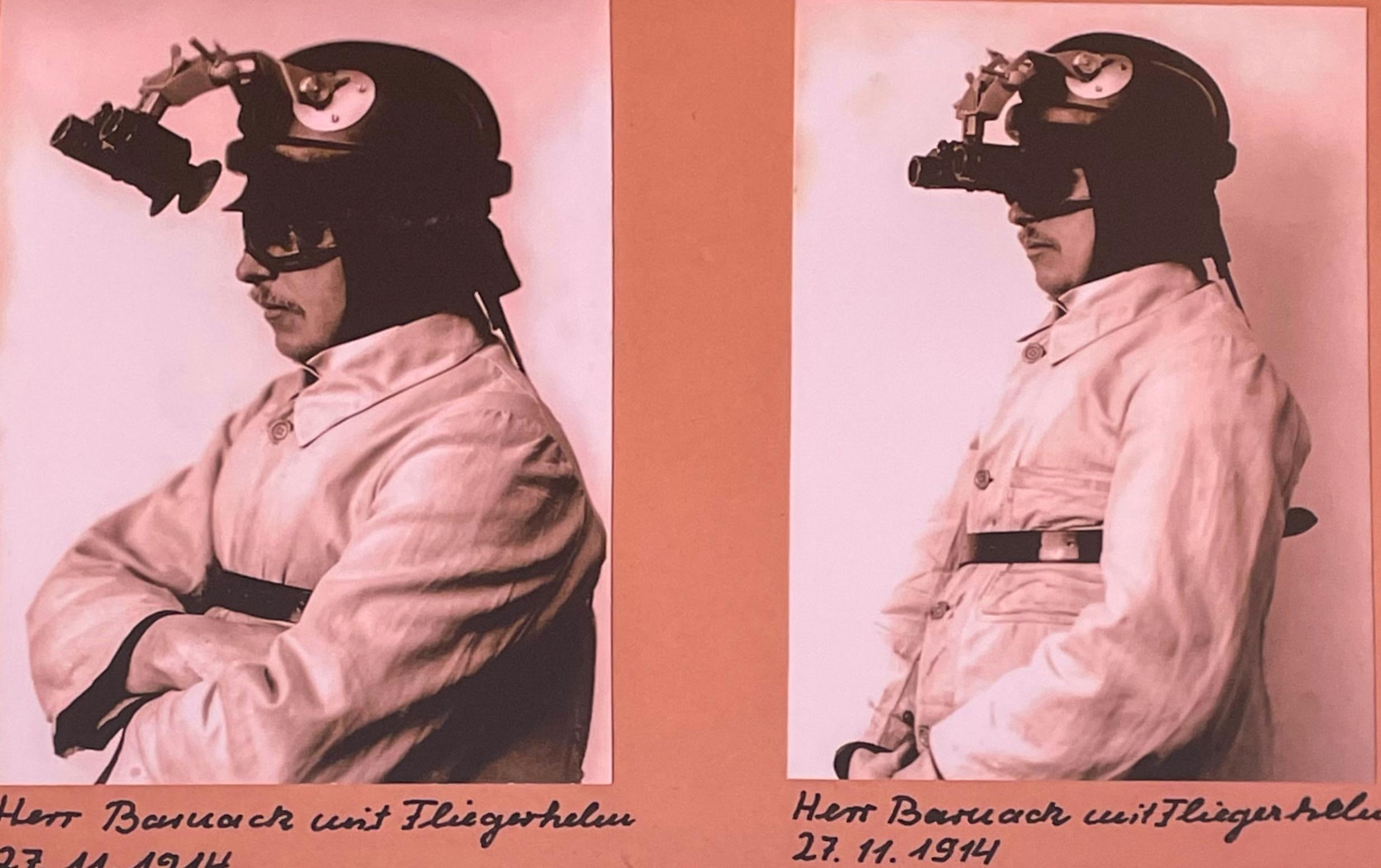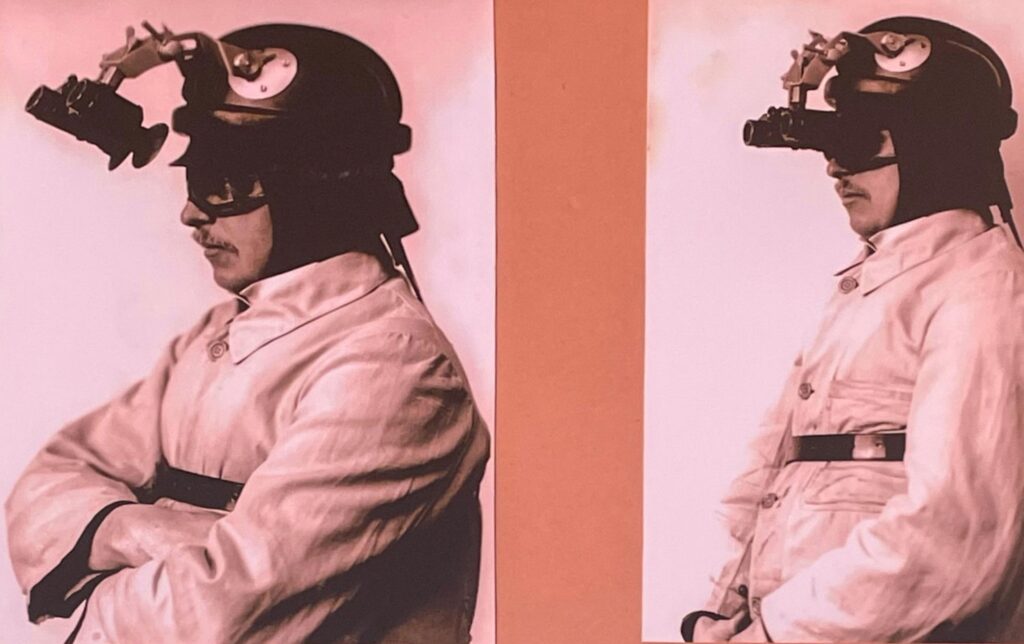Eat your core out, Apple. This concept version of Apple Vision Pro was perched before the eyes of none other than Oskar Barnack as far back as November 1914. Barnack? You know, the guy who invented the Leica camera. We always knew he was a visionary, but the photograph in this article proves his interests ranged far wider than the infant 35mm film camera.
To prove the point, here is Oskar taking a break from camera development to try out the latest Kriegsvision Pro virtual reality kit. This was state-of-the-art gear back in 1914 and was intended to aid the vision of Germany’s budding ace pilots on the western front. Baron von Richthofen probably had one of these, allowing him to get one over on Biggles.
But how do we know it’s Oskar? Well, our own William Fagan snapped this display on June 12 during his visit to Wetzlar to attend the 42nd Leica Photographica Auction. And here is the caption to prove it.

Core of the matter

You’d never know the difference, really, would you? Apple’s device is just a bit more modern and doesn’t have a moustache. Who knows, if it hadn’t been for that war and Biggles, we might have been looking forward to the Leica Vision Pro next year instead of the latest wonder from Apple.
Are you in the market for an Apple Vision Pro when it appears next year, exactly 110 years after Oskar showed the wizards of Cupertino the way? Would you buy it if it were Leica Vision Pro, hot from your favourite brand? After all, at the thick end of £3,000, the Apple Vision Pro is a chip off the old Leica pricing block, so you’d feel right at home.
Actually, I’m quite excited by the new Apple Vision Pro, and I will probably buy one just for the heck of it. Something new, especially if it becomes as successful as the iPhone. But an authenticated Oskar Pilot Helmet virtual reality set would undoubtedly fetch more than an Apple Vision Pro at the Leitz Auction next year…
A cup of coffee works wonders in supporting Macfilos
Did you know that Macfilos is run by a dedicated team of volunteers? We rely on donations to help pay our running costs. And even the cost of a cup of coffee will do wonders for our energy levels.



Wonderful story, Mike – and thanks, William, for taking this photo. Seeing things that the naked eye can’t conceive is and old dream as we see. However, I am with Oskar who was focused on the real reality. I personally find it more exciting than the virtual „reality“. That said, the idea of a Macfilos newsroom full of the avatars you mentioned is intriguing. We will… see. JP
Thanks, J-P, from one avatar to another.
I was having my breakfast in the Ernst Leitz Hotel and I looked up and saw this. The Apple ‘thingie’ had been in the news a few days before and I made the connection. It is good, though, to realise that prior to 1924/5 Barnack had a lot more to do than just developing the Leica camera and Leitz was involved in optics of many different kinds. One of the volumes by Helmut Lagler (Vol 2) identifies which members of the Leitz staff were responsible for which patents. If Ed Schwartzreich reads this he might look up this device to see who was responsible for the patent for this one. Ed has recently reviewed some of Lagler’s set for LSI Viewfinder magazine.
William
In the 1930’s Leitz general catalogue an item is listed with the codeword “video”, years before VHS or Betamax was launched by the Japanese
On the other side of the coin… I overheard two youngsters looking round Neuschwanstein Castle “…and it’s just like being in the movies …”
( I hope I didn’t offend them by adding “ Maybe you SHOULD get out more”
Trust me, if you are on a crowded subway train in Tokyo there is absolutely. no room to move your hands to control your Apple Vision Pro. Unless you want to get arrested by the police for being a pervert.. That’s why they demonstrate it safely being used at home on the sofa! As you say Kathy, you learn where you are much easier by using your eyes and asking people in the local language than blindly following a phone or a headset. I once traveled with a friend who used a phone to find a particular location in Tokyo. They were following the on screen instructions and went two blocks in the wrong direction even though I told them they were going the wrong way. I had been there before. The problem with following a digital device is that you are not really paying attention to your surroundings. Even though Apple has devised a way for you to see people in your immediate field of view I don’t think I would trust walking around with it in traffic.
Very good point! I was on a rush hour train from Shimbashi to Tokyo Station. Well….it was a once-in-a-lifetime experience: I hope. It was all I could do to stay somewhere near my luggage.
I’m really rather bad at using oodle maps on a phone: you touch something in the wrong place and all of a sudden it tells you all the ramen houses in the area. Too unstable under minor perturbations.
Is it humanly possible to hold your tongue in cheek for that long?
It does make me wonder: what kinds of optics were available to pilots in the Great War? Especially those dropping bombs?
It is a good reminder: though we seldom mention it here, Leitz makes truly superb binoculars. We bougt a pair just after moving to the nature preserve. Bit of purple fringing, but I suppose that comes with the optics.
Altough we have Apple equipment all over the house, I can’t imagine using any kind of VR. I suppose I’m acting my age when I say it’s a limited experience. There’s an interesting new book: Ed Yong’s ‘An Immense World’, about how different species sense their environment. I suppose if VR could simulate that, it might be worth it. But then …. VR now is about visual stimuli. That’s such a sparse representation of our world.
I also have limited experience with virtual reality. A friend has one of those Oculus Wotsits and I tried it once. I was nauseous after three minutes so haven’t tried it since
My interest lies more in using it for productivity, including blogging. I could create a total Macfilos environment populated with avatars of Oskar, William F, J-P, Keith, Jean, Farhiz and all our other contributors.
But then, again, I might be unwell.
I haven’t read about anyone using the Apple for extended periods; other systems induce the same nausea you felt.
Now Google Glass . . . I might use something like that. If I were in a part of Tokyo I didn’t know and needed to find the train station, that could be very helpful.
But then again, wouldn’t taking the trouble to learn a bit of Japanese be just as effective? And one might even strike up a conversation, meet a person? One might argue VR is isolating….